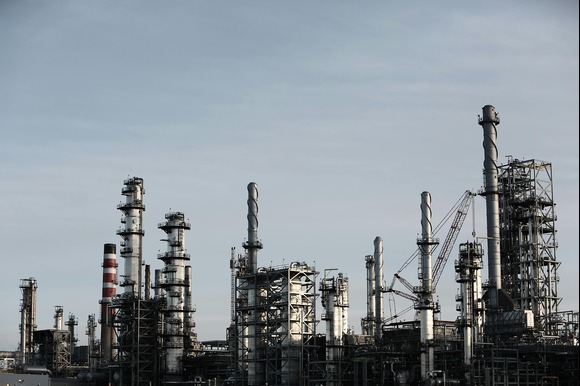
Photo by Life Of Pix
Oil prices plunged nearly 4% on Thursday amid rising expectations of a new US-Iran nuclear deal that could unleash additional crude supply into global markets. Meanwhile, stock markets paused after a strong recovery rally in recent weeks.
Brent crude fell by more than $2, slipping below $64 a barrel, following US President Donald Trump’s comments from his Middle East tour, where he stated that negotiations with Iran were progressing well and Tehran had “sort of” agreed to the proposed terms.
Adding to the optimism, Ali Shamkhani, a top adviser to Iran’s Supreme Leader Ayatollah Ali Khamenei, told NBC that Iran would commit to never producing nuclear weapons and would eliminate its stockpile of highly-enriched uranium. Iran, a key member of OPEC and its third-largest oil producer, currently pumps around 3 million barrels per day, accounting for roughly 3% of global oil output. However, its exports have been limited due to heavy sanctions imposed since Trump withdrew from the original 2015 nuclear accord.
The price drop affected more than just Brent. European oil and gas stocks slid nearly 2%, and bonds from other oil-exporting countries like Angola and Nigeria also declined. Paul Hollingsworth, an economist at BNP Paribas, noted that the drop in crude prices added to existing deflationary pressures in Europe, which are already grappling with uncertainty from US trade tariff policies.
“There’s a lot of volatility driven by inconsistent announcements, making it difficult for markets to find their footing,” Hollingsworth said.
With the trade war showing signs of easing, investors are now focused on the long-term impact of recent volatility, particularly whether there’s a structural shift away from US assets and the dollar.
“We’re in a better place than a few weeks ago, but there has definitely been some lasting damage,” Hollingsworth added.
Falling oil prices also weighed on the US dollar and government bond yields — key indicators of borrowing costs. In the UK, official data showed that GDP grew by a better-than-expected 0.2% in March. Investors are now watching for eurozone Q1 flash GDP data and key US indicators, including April retail sales and jobless figures. Germany’s 10-year bond yield edged down one basis point to 2.68%, close to the multi-week high of 2.7% reached a day earlier.
Meanwhile, US Treasury yields remained around a one-month high, just above 4.5%, reflecting concerns over Trump’s proposed budget, which would significantly increase US debt levels.
Data Deluge and Market Caution
Earlier in the week, investors were buoyed by a series of positive developments: a ceasefire in the US-China trade conflict and several high-profile investment deals from the Middle East during Trump’s visit to the Gulf region. These events helped revive risk appetite in global markets. However, by Thursday, the rally had cooled, with MSCI’s broad index of Asia-Pacific shares (excluding Japan) down 0.15% and Wall Street futures slipping 0.5%, following the Nasdaq’s nearly 30% rebound since early April lows.
“We’ve had a massive celebration, and now the market is in recovery mode — waiting for the next big catalyst,” said Tony Sycamore, an analyst at IG.
While the US-China trade thaw offered some relief, a lack of consistent messaging from Trump’s administration continues to cloud the global economic outlook. Market participants are also closely eyeing Thursday’s US retail sales report and Walmart earnings — seen as key indicators of American consumer health.
A weaker-than-expected showing could reignite recession fears in the world’s largest economy, potentially dragging down global markets further.
Investors are also tuning in to Federal Reserve Chair Jerome Powell’s scheduled speech later in the day for potential clues on the future path of interest rates in the US.
Currency and Commodity Moves
On the currency front, the US dollar struggled to maintain its early-week momentum. It slipped 0.7% against the yen to 145.75, while the euro rose 0.3% to $1.12. BNP Paribas’ Hollingsworth said the bank projects the euro-dollar rate will reach $1.20, citing a longer-term shift away from dollar-denominated assets.
“This is not a short-term reaction. We’re looking at a gradual, structural rebalancing over the coming years,” he said.
The Korean won experienced another volatile session, after South Korea’s deputy finance minister Choi Ji-young met US Treasury Assistant Secretary Robert Kaproth on May 5 to discuss movements in the dollar/won exchange rate.
Elsewhere, the Australian dollar climbed after stronger-than-expected employment data, last trading at $0.6432. Meanwhile, spot gold prices found some stability in Europe but were still down 0.6% on the day, hovering around $3,159 an ounce.




